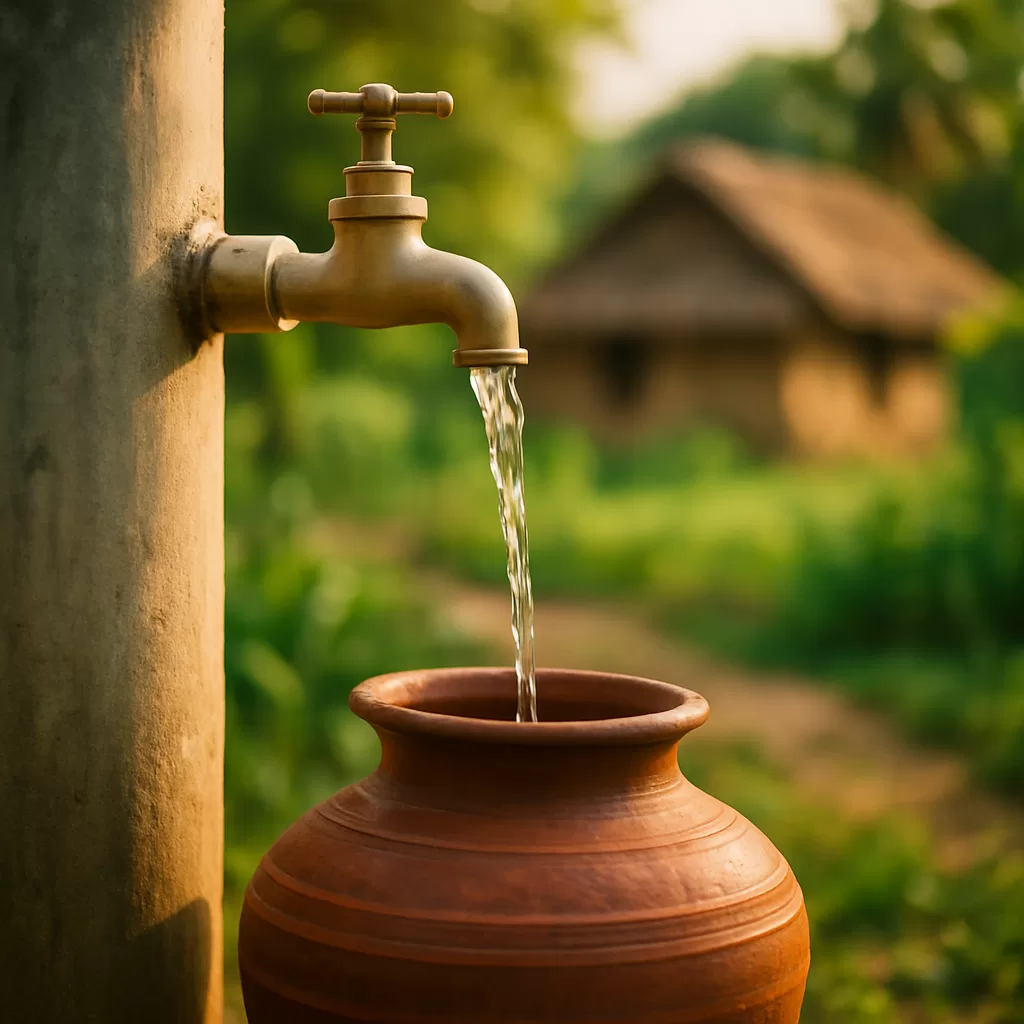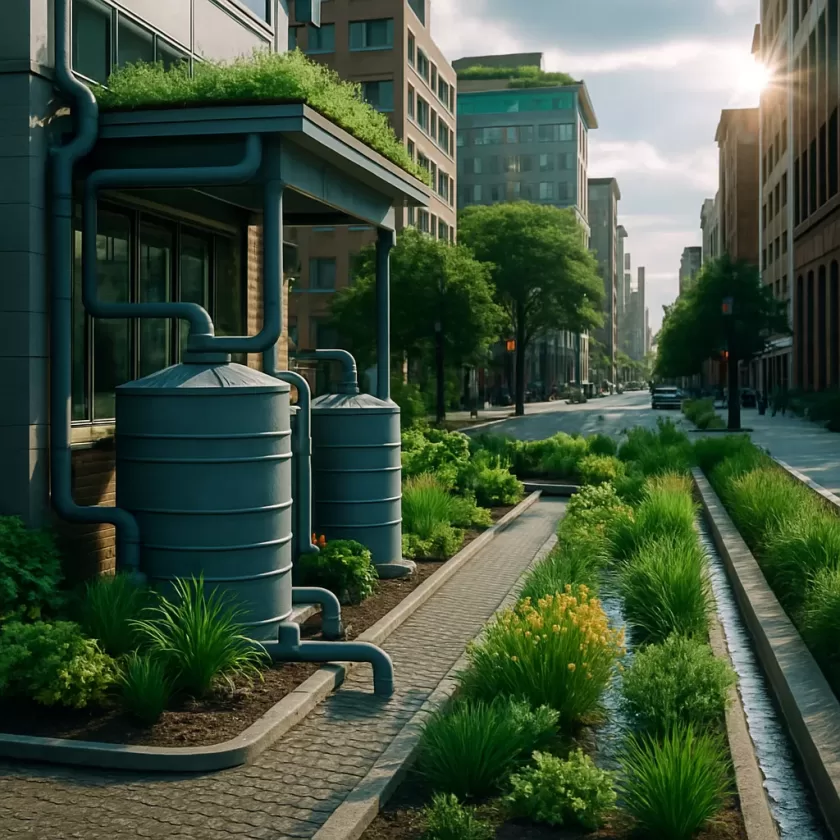The Har Ghar Jal Mission, launched in 2019 under India’s Jal Jeevan Mission (JJM), aims to provide every rural household with a functional tap water connection by 2024. This initiative seeks to ensure the availability of 55 liters of potable water per person per day, thereby addressing longstanding issues of water accessibility and quality in rural India. ([1])
Objectives and Implementation Framework
The primary objective of the Har Ghar Jal Mission is to achieve universal coverage of tap water connections in rural households. The mission emphasizes a decentralized, community-driven approach, involving local governance structures such as Gram Panchayats and Village Water and Sanitation Committees (VWSCs), also known as Paani Samitis. These bodies are responsible for the planning, implementation, operation, and maintenance of water supply systems within their jurisdictions. ([2])
Financially, the mission operates on a cost-sharing model between the central and state governments. The central government bears 50% of the cost, while the remaining 50% is covered by the states. For Union Territories, the central government provides 100% funding. This collaborative financial structure ensures shared responsibility and commitment at both levels of government. ([3])
Progress and Achievements
As of June 10, 2025, significant strides have been made under the Har Ghar Jal Mission. Approximately 79.5% of rural households, equating to 15.4 crore households, have received tap water connections. Notably, 110 districts, 939 blocks, 84,384 panchayats, and 164,179 villages have been certified as ‘Har Ghar Jal,’ indicating complete coverage within these areas. ([4])
A standout example is Burhanpur district in Madhya Pradesh, which became the first ‘Har Ghar Jal’ certified district on July 23, 2022. The district achieved 100% Functional Household Tap Connections (FHTCs) across all 254 villages, benefiting 66,664 households. This success is attributed to effective administration, community mobilization, and innovative practices such as involving Self-Help Groups (SHGs) in water tax collection, thereby ensuring sustainability and community ownership. ([5])
Challenges and Constraints
Despite commendable progress, the mission faces several challenges that have impeded its full realization.
Impact of the COVID-19 Pandemic
The global pandemic disrupted supply chains and labor availability, leading to delays in infrastructure development. Restrictions affected the procurement of essential materials like pipes and hindered on-ground construction activities. ([6])
Material Shortages
The Russia-Ukraine conflict exacerbated shortages of critical materials such as steel and cement, essential for manufacturing and connecting metal pipes. These shortages led to price escalations and project delays. ([7])
Skilled Manpower Deficit
Several states reported a lack of skilled workers necessary for constructing quality water infrastructure, including tanks and cisterns. This shortage has affected the pace and quality of implementation. ([8])
Regional Disparities
Progress under the mission has been uneven across states. As of January 2025, states like West Bengal, Kerala, Jharkhand, and Rajasthan had only achieved around 54% coverage, leaving nearly half of the rural households without tap water connections. ([9])
Data Reliability Concerns
The accuracy of reported data has been questioned, with discrepancies between official figures and ground realities. For instance, while states report high coverage, independent assessments have revealed gaps in actual connectivity and functionality of the water supply systems. ([10])
Community Participation and Sustainability
A cornerstone of the Har Ghar Jal Mission is the active involvement of local communities in the planning and maintenance of water supply systems. Training programs have been conducted to empower community members, particularly women, to manage and monitor water quality. For example, in Burhanpur district, 269 members from 141 SHGs across 134 villages were trained to use Field Test Kits (FTKs) for water quality testing. ([11])
Additionally, SHGs have been instrumental in water tax collection, ensuring financial sustainability. Members collect an average monthly water tax of Rs. 60 from each household, with a commission structure that incentivizes efficient collection and deposit into the Gram Panchayat’s bank account. ([12])
Health and Socio-Economic Impacts
The mission has had a profound impact on public health and socio-economic conditions in rural areas. Access to clean drinking water has led to a significant reduction in water-borne diseases. A study by the National Centre for Disease Control (NCDC) reported a decrease in cases from 177 million in 2019 to 59 million in 2021. ([13])
Furthermore, the availability of tap water has alleviated the burden on women and girls, who traditionally spent considerable time fetching water. This time savings has enabled increased participation in educational and economic activities, thereby contributing to overall community development. ([14])
The Har Ghar Jal Mission represents a transformative step towards ensuring water security in rural India. While significant progress has been made, addressing the existing challenges is crucial for achieving universal coverage. Strengthening community participation, ensuring data transparency, and enhancing infrastructure development are essential for the mission’s success. Continued commitment and collaborative efforts at all levels of government and society will be pivotal in realizing the vision of ‘Har Ghar Jal’—water in every home.
Bibliography
[1,3] – https://en.wikipedia.org/wiki/Jal_Jeevan_Mission
[2] – https://pwonlyias.com/current-affairs/who-report-on-the-har-ghar-jal-program/
[4] – https://thekashmirimages.com/2025/06/17/more-than-a-pipe-har-ghar-jal-brings-dignity-health-and-hope/
[5,11,12] – https://www.indiawaterportal.org/articles/how-burhanpur-became-indias-first-har-ghar-jal-district
[6,8] – https://www.drishtiias.com/daily-updates/daily-news-editorials/india-water-challenges-and-har-ghar-jal-scheme
[7] – https://www.civilsdaily.com/news/har-ghar-jal-initiative-to-miss-2024-target/
[9] – https://www.moneycontrol.com/news/india/har-ghar-jal-mission-misses-2024-target-nearly-half-of-households-in-4-states-left-out-12903244.html
[10] – https://believersias.com/navigating-the-waters-of-access-analyzing-the-progress-challenges-and-way-forward-for-har-ghar-jal-missions-in-india/
[13,14] – https://www.financialexpress.com/policy/economy-enabling-har-ghar-jal-through-jal-jeevan-mission-2905962/





